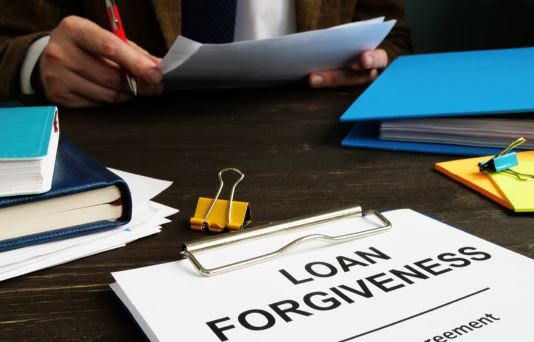PPP – Two Interim Rules Issued By SBA On Friday, May 22

 The SBA issued two interim final rules last Friday, May 22 addressing PPP loan forgiveness, loan review procedures, and borrower and lender responsibilities.
The SBA issued two interim final rules last Friday, May 22 addressing PPP loan forgiveness, loan review procedures, and borrower and lender responsibilities.
Although the two interim final rules provide some additional information and guidance, there are two critical issues that were not addressed: Potential extension of the 8 week covered period, and the requirement that PPP borrowers spend at least 75% of the funds on payroll costs to qualify for full loan forgiveness are the focus of multiple bills currently being considered in Congress.
FIRST INTERIM FINAL RULE
This rule addresses loan forgiveness, primarily by providing more detailed guidance and explanation of the previously released Loan Forgiveness Application and Instructions.
There are, however, several pieces of new and noteworthy information:
- Confirmation that “if an employee’s total compensation does not exceed $100,000 on an annualized basis, the employee’s hazard pay and bonuses are eligible for loan forgiveness because they constitute a supplement to salary or wages, and are thus a similar form of compensation”.
- Clarification of the “paid and incurred” language related to non-payroll costs using the following example:
-
- A borrower’s covered period begins on June 1 and ends on July 26. The borrower pays its May and June electricity bill during the covered period and pays its July electricity bill on August 10, which is the next regular billing date. The borrower may seek loan forgiveness for its May and June electricity bills, because they were paid during the covered period. In addition, the borrower may seek loan forgiveness for the portion of its July electricity bill through July 26 (the end of the covered period), because it was incurred during the covered period and paid on the next regular billing date.
-
- Based on the example, companies can count expenses that were incurred prior to the covered period, but paid within the covered period, IN ADDITION TO expenses incurred and paid during the covered period, and incurred during the covered period but paid by the next regular billing date.
- An administrative convenience option for the calculation of FTEs was provided allowing borrowers to “elect to use a full-time equivalency of 0.5 for each part-time employee”. If elected, this option must be consistently applied for all part-time employees during the covered period and reference period.
- Clarification of treatment of FTE reductions related to employee actions or request as follows:
-
- When an employee of the borrower is fired for cause, voluntarily resigns, or voluntarily requests a reduced schedule during the covered period or the alternative payroll covered period (FTE reduction event), the borrower may count such employee at the same full-time equivalency level before the FTE reduction event when calculating the section 1106(d)(2) FTE employee reduction penalty.
SECOND INTERIM FINAL RULE
This rule provides guidance with respect to the SBA loan review process as well as the responsibilities of both borrowers and lenders in the process.
Here are some significant provisions:
- SBA may review any PPP loan as the Administrator deems appropriate.
- SBA may undertake a review at any time, up to six years after the date the loan is forgiven or repaid in full.
- If a loan is selected for review by SBA, the following representations and statements can be included in the review:
- Borrower eligibility
- Loan amounts and use of proceeds
- Loan forgiveness amounts
- If SBA determines that a borrower is ineligible for the PPP loan, SBA will direct the lender to deny the loan forgiveness application. Further, if SBA determines that the borrower is ineligible for the loan amount or loan forgiveness amount claimed by the borrower, SBA will direct the lender to deny the loan forgiveness application in whole or in part, as appropriate. SBA may also seek repayment of the outstanding PPP loan balance or pursue other available remedies.
- SBA intends to issue a separate interim final rule establishing a process to appeal a determination that the borrower is ineligible for a PPP loan or ineligible for the loan amount or the loan forgiveness amount claimed by the borrower.
- Loan Forgiveness Process for Lenders:
- Providing an accurate calculation of the loan forgiveness amount is the responsibility of the borrower, and the borrower attests to the accuracy of its reported information and calculations on the Loan Forgiveness Application. Lenders are expected to perform a good-faith review, in a reasonable time, of the borrower’s calculations and supporting documents concerning amounts eligible for loan forgiveness. For example, minimal review of calculations based on a payroll report by a recognized third-party payroll processor would be reasonable. By contrast, if payroll costs are not documented with such recognized sources, more extensive review of calculations and data would be appropriate.
- As stated in paragraph III.3.c of the First Interim Final Rule, the lender does not need to independently verify the borrower’s reported information if the borrower submits documentation supporting its request for loan forgiveness and attests that it accurately verified the payments for eligible costs.
- Timeline for lender’s decision on a loan forgiveness application (no changes)
- The lender must issue a decision to SBA on a loan forgiveness application not later than 60 days after receipt of a complete loan forgiveness application from the borrower.
- SBA will, subject to any SBA review of the loan or loan application, remit the appropriate forgiveness amount to the lender, plus any interest accrued through the date of payment, not later than 90 days after the lender issues its decision to SBA.
Our team will continue to monitor this for further developments and will be updating you as soon as we receive more information.
